
How to Use HC-SR505 Mini PIR Motion Sensing Module: Examples, Pinouts, and Specs
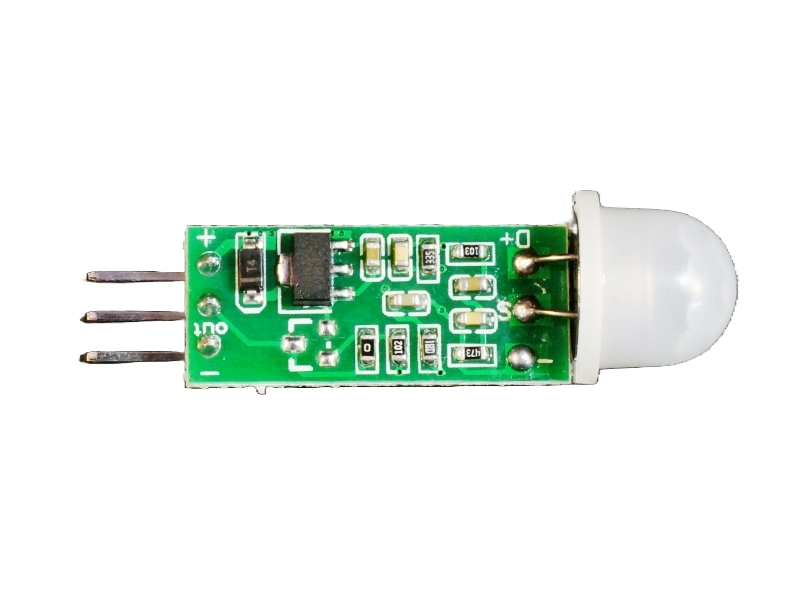
 Design with HC-SR505 Mini PIR Motion Sensing Module in Cirkit Designer
Design with HC-SR505 Mini PIR Motion Sensing Module in Cirkit DesignerIntroduction
The HC-SR505 Mini PIR Motion Sensing Module is a compact passive infrared (PIR) sensor designed to detect motion by sensing changes in infrared radiation, typically emitted by human bodies. This module is widely used in security systems, home automation, and energy-saving applications due to its small size, low power consumption, and reliable performance.
Explore Projects Built with HC-SR505 Mini PIR Motion Sensing Module
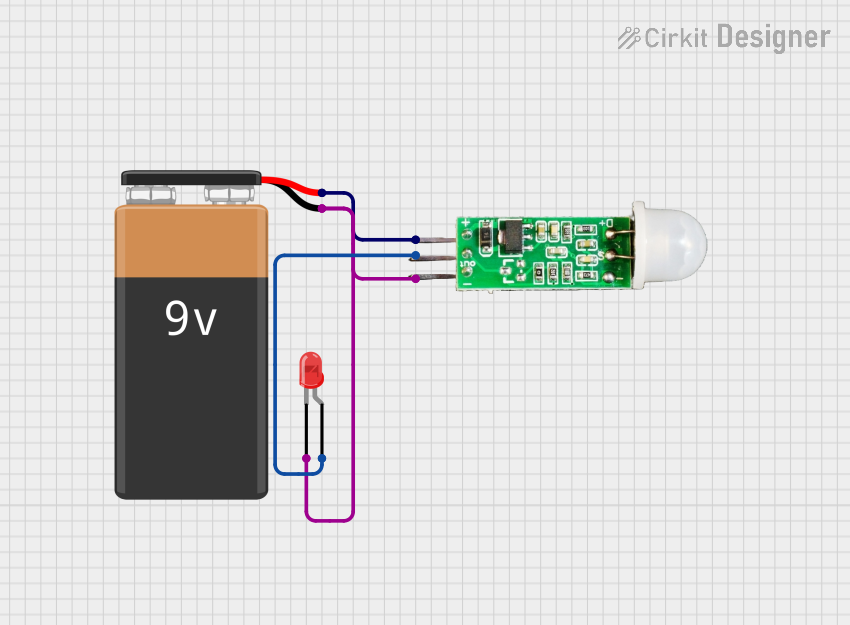
 Open Project in Cirkit Designer
Open Project in Cirkit Designer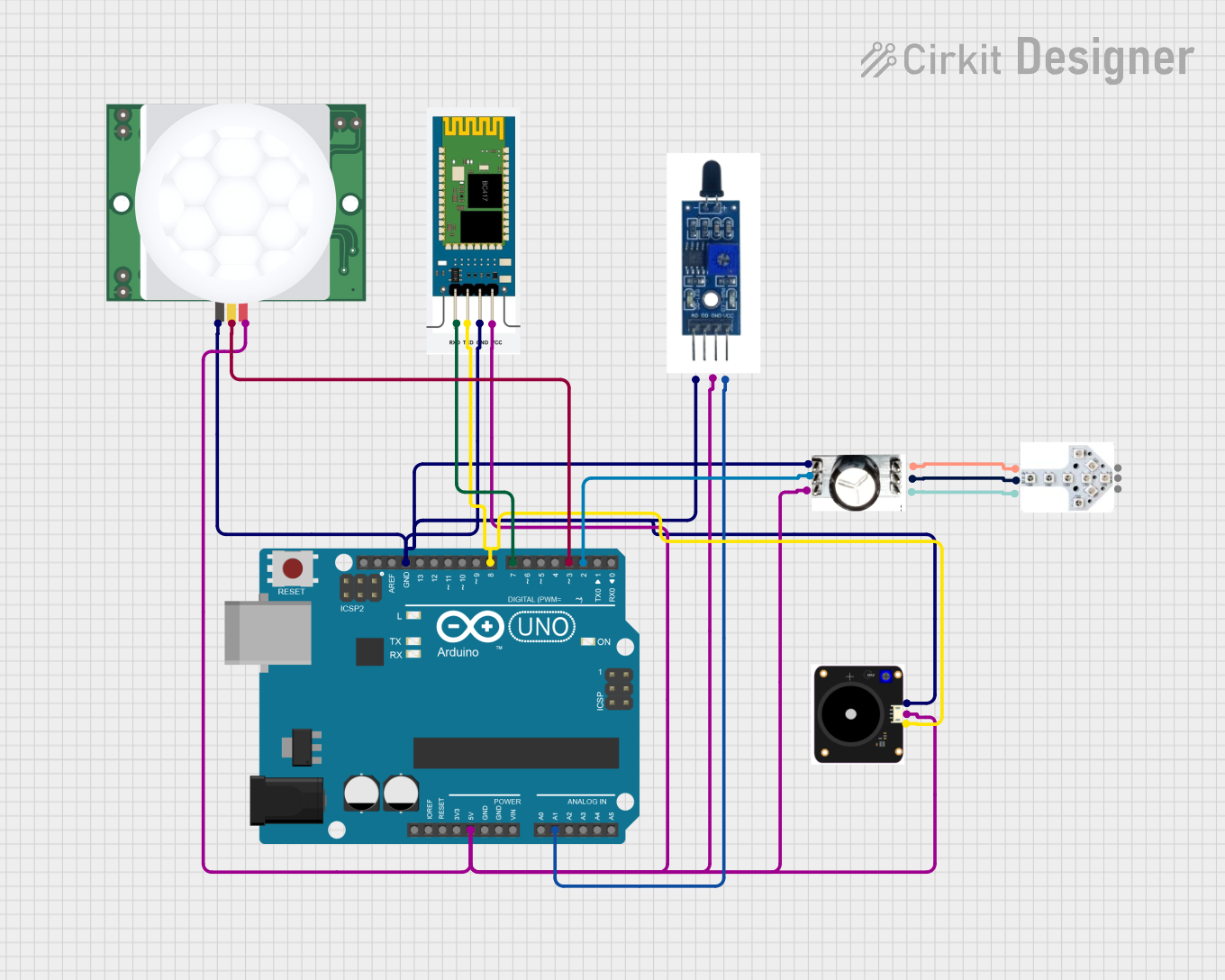
 Open Project in Cirkit Designer
Open Project in Cirkit Designer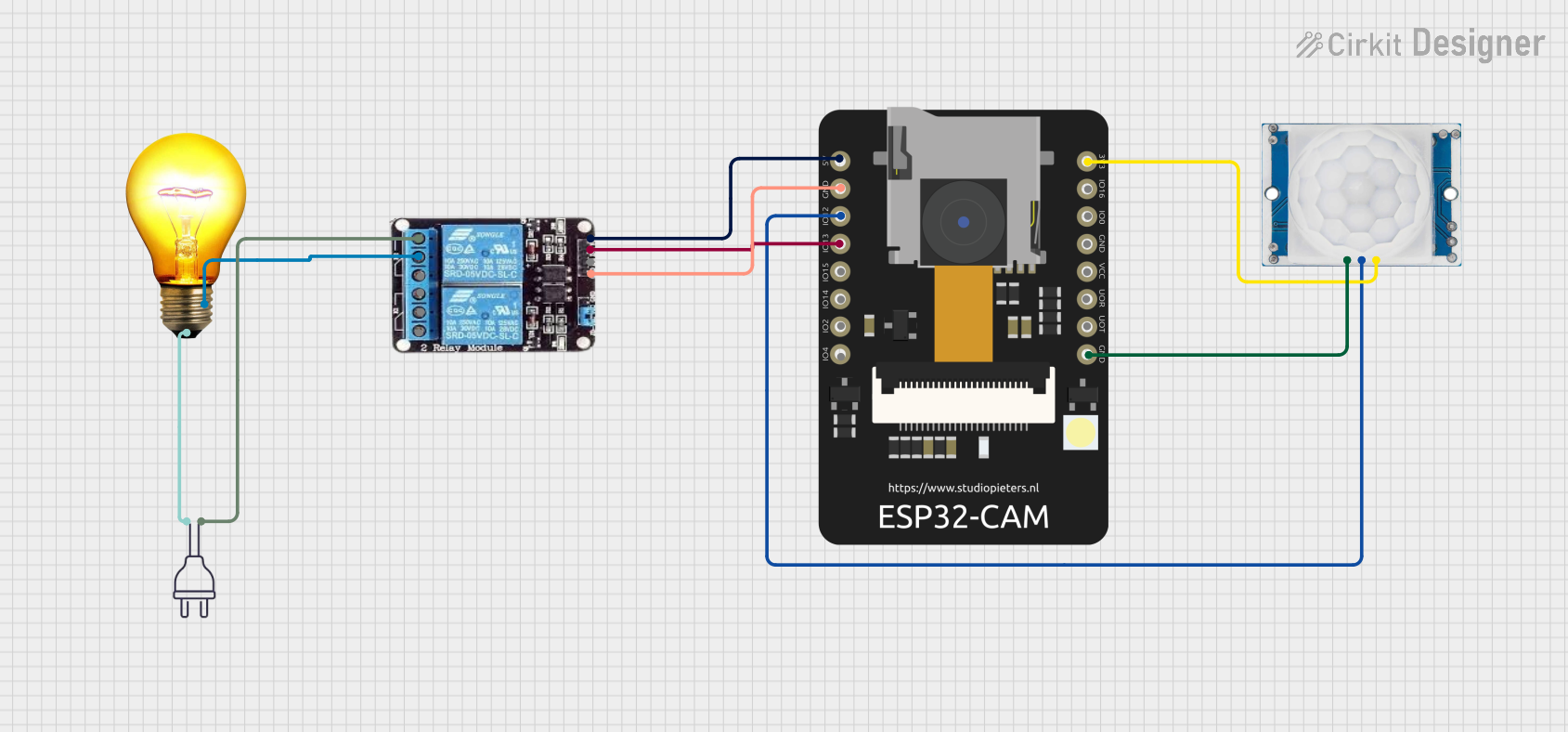
 Open Project in Cirkit Designer
Open Project in Cirkit Designer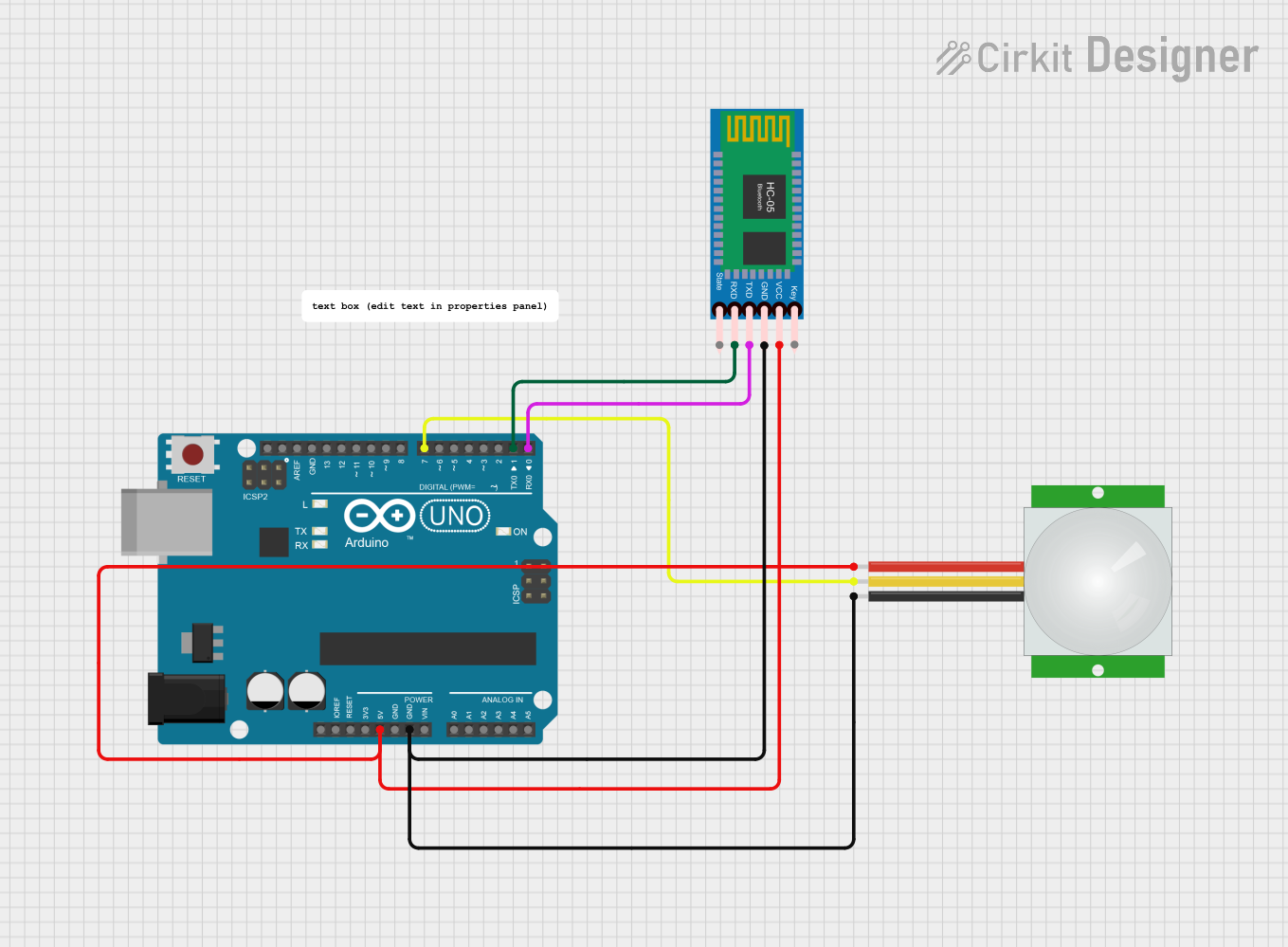
 Open Project in Cirkit Designer
Open Project in Cirkit DesignerExplore Projects Built with HC-SR505 Mini PIR Motion Sensing Module

 Open Project in Cirkit Designer
Open Project in Cirkit Designer
 Open Project in Cirkit Designer
Open Project in Cirkit Designer
 Open Project in Cirkit Designer
Open Project in Cirkit Designer
 Open Project in Cirkit Designer
Open Project in Cirkit DesignerCommon Applications and Use Cases
- Motion-activated lighting systems
- Intruder detection in security systems
- Automatic door openers
- Energy-efficient appliances
- DIY electronics and Arduino-based projects
Technical Specifications
The HC-SR505 module is designed for ease of use and integration into various electronic systems. Below are its key technical details:
| Parameter | Specification |
|---|---|
| Operating Voltage | 4.5V to 20V DC |
| Quiescent Current | < 60 µA |
| Detection Range | Up to 3 meters |
| Detection Angle | < 100° |
| Output Signal | High (3.3V) when motion is detected |
| Output Duration | ~8 seconds (non-adjustable) |
| Operating Temperature | -20°C to +70°C |
| Dimensions | 10mm x 23mm |
Pin Configuration and Descriptions
The HC-SR505 module has three pins for easy connection:
| Pin | Name | Description |
|---|---|---|
| 1 | VCC | Connect to the positive supply voltage (4.5V to 20V DC). |
| 2 | OUT | Output pin. Goes HIGH (3.3V) when motion is detected, LOW (0V) otherwise. |
| 3 | GND | Connect to the ground of the power supply. |
Usage Instructions
The HC-SR505 Mini PIR Motion Sensing Module is simple to use and can be integrated into a variety of circuits. Follow the steps below to use the module effectively:
Connecting the Module
- Power Supply: Connect the VCC pin to a DC power source (4.5V to 20V) and the GND pin to the ground.
- Output Signal: Connect the OUT pin to the input pin of a microcontroller (e.g., Arduino) or directly to a load (e.g., an LED or relay) if the current requirements are met.
Important Considerations
- Warm-Up Time: The module requires a warm-up time of approximately 10 seconds after power-up to stabilize.
- Detection Range: Ensure the module is placed within its specified detection range (up to 3 meters) for optimal performance.
- Avoid Obstructions: Do not place the module behind glass or other materials that block infrared radiation.
- Power Supply: Use a stable power supply to avoid false triggers.
Example: Using HC-SR505 with Arduino UNO
Below is an example of how to connect and use the HC-SR505 module with an Arduino UNO to control an LED:
Circuit Diagram
- Connect the VCC pin of the HC-SR505 to the Arduino's 5V pin.
- Connect the GND pin of the HC-SR505 to the Arduino's GND pin.
- Connect the OUT pin of the HC-SR505 to the Arduino's digital pin 2.
- Connect an LED (with a 220-ohm resistor) to digital pin 13 of the Arduino.
Arduino Code
// HC-SR505 Mini PIR Motion Sensor with Arduino UNO
// This code turns on an LED when motion is detected.
const int pirPin = 2; // HC-SR505 OUT pin connected to digital pin 2
const int ledPin = 13; // LED connected to digital pin 13
void setup() {
pinMode(pirPin, INPUT); // Set PIR pin as input
pinMode(ledPin, OUTPUT); // Set LED pin as output
digitalWrite(ledPin, LOW); // Ensure LED is off initially
Serial.begin(9600); // Initialize serial communication for debugging
}
void loop() {
int motionDetected = digitalRead(pirPin); // Read PIR sensor output
if (motionDetected == HIGH) {
// If motion is detected, turn on the LED
digitalWrite(ledPin, HIGH);
Serial.println("Motion detected!");
} else {
// If no motion is detected, turn off the LED
digitalWrite(ledPin, LOW);
}
delay(100); // Small delay to stabilize readings
}
Troubleshooting and FAQs
Common Issues and Solutions
No Output Signal (OUT pin always LOW):
- Ensure the module is powered correctly (4.5V to 20V DC).
- Verify that the module has completed its warm-up time (10 seconds).
- Check for obstructions blocking the sensor's field of view.
False Triggers (OUT pin goes HIGH without motion):
- Ensure the module is not exposed to direct sunlight or heat sources.
- Use a stable power supply to minimize noise and interference.
Short Detection Range:
- Verify that the module is within its specified detection range (up to 3 meters).
- Ensure the sensor is not obstructed by objects or materials that block infrared radiation.
FAQs
Q1: Can the detection range or output duration be adjusted?
A1: No, the HC-SR505 module has a fixed detection range (up to 3 meters) and output duration (~8 seconds).
Q2: Can the module detect motion through glass?
A2: No, the module cannot detect motion through glass or other materials that block infrared radiation.
Q3: Is the module compatible with 3.3V systems?
A3: Yes, the module's output signal is 3.3V, making it compatible with 3.3V logic systems. However, the power supply voltage must be between 4.5V and 20V.
Q4: How can I increase the detection range?
A4: The detection range is fixed and cannot be increased. For longer ranges, consider using a different PIR sensor with adjustable settings.
By following this documentation, you can effectively integrate the HC-SR505 Mini PIR Motion Sensing Module into your projects and troubleshoot common issues with ease.